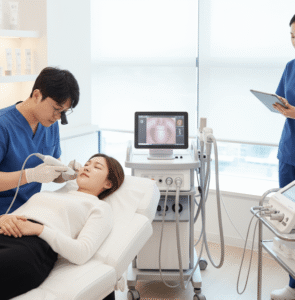Overview
An air embolism is a potentially life-threatening condition that occurs when one or more air bubbles enter the bloodstream and block blood flow to vital organs. This can result in serious complications, especially if the air bubble travels to the brain, heart, or lungs. It can happen due to trauma, surgical procedures, or diving accidents and requires immediate medical intervention.
What is Air Embolism?
An air embolism, also known as a gas embolism, occurs when air or gas bubbles enter the vascular system and obstruct blood vessels. The bubble can interfere with normal circulation, depriving tissues and organs of oxygen. Depending on its location and size, an air embolism can cause symptoms ranging from mild to fatal.
There are two main types:
- Venous air embolism – when air enters a vein
- Arterial air embolism – when air enters an artery, often more dangerous
Symptoms
Symptoms vary depending on where the embolism occurs and how much air is involved. Common symptoms include:
- Difficulty breathing or shortness of breath
- Chest pain
- Dizziness or confusion
- Low blood pressure
- Irregular heartbeat
- Bluish skin (cyanosis)
- Fainting or unconsciousness
- Stroke-like symptoms (if the brain is affected)
In diving-related embolisms:
- Joint or muscle pain
- Numbness or paralysis
- Visual disturbances
Causes
Air embolisms can occur through various medical, surgical, and environmental causes:
- Intravenous injections or catheters inserted improperly
- Surgical procedures, especially involving the brain, lungs, or heart
- Chest trauma that opens large veins
- Positive pressure ventilation
- Diving accidents (rapid ascent during scuba diving)
- Lung trauma from barotrauma
- Childbirth or abortion-related complications
Even small amounts of air introduced under pressure can lead to significant issues.
Risk Factors
- Central venous catheter placement
- Head or chest trauma
- Certain surgeries (e.g., neurosurgery, cardiac surgery)
- Mechanical ventilation with high pressures
- Scuba diving or underwater construction work
- Childbirth procedures
- Inadequate training in diving or use of hyperbaric equipment
Complications
If not promptly treated, an air embolism can lead to:
- Stroke
- Heart attack
- Respiratory failure
- Permanent neurological damage
- Cardiac arrest
- Death
The severity depends on the location, volume of air, and speed of treatment.
Prevention
- Proper medical technique during surgeries and IV catheter insertions
- Use of filters in intravenous lines
- Positioning patients correctly during procedures (e.g., Trendelenburg position)
- Close monitoring of central line usage
- Safe diving practices, including slow ascents and using dive computers
- Hyperbaric training and precautions for underwater workers
Education and protocol adherence are key to preventing medical and environmental air embolisms.
Treatment Options Korea
1. Emergency Recognition and Supportive Care
- Immediate recognition is critical due to life-threatening potential
- ABC management: secure airway, support breathing, maintain circulation
- Place patient in Trendelenburg (head-down) and left lateral decubitus position to trap air in the right atrium
2. High-Flow Oxygen Therapy
- Administer 100% oxygen via non-rebreather mask or mechanical ventilation
- Helps reduce bubble size and improves tissue oxygenation
3. Hyperbaric Oxygen Therapy (HBOT)
- Primary treatment for arterial air embolism (e.g., following surgery, IV procedures, diving accidents)
- Performed at certified hyperbaric centers in Korea (e.g., Korean Navy hospitals, tertiary centers like Samsung Medical Center)
- Reduces bubble size and promotes nitrogen resorption
4. Cardiovascular Monitoring and Support
- Cardiac monitoring for arrhythmias, hypotension, and right heart strain
- IV fluids or vasopressors to maintain perfusion
- Echocardiography may be used to detect air in heart or pulmonary vessels
5. Neurological Assessment
- Continuous evaluation for stroke-like symptoms, seizures, or altered consciousness
- Brain imaging (CT/MRI) may be needed to rule out cerebral air embolism
- Neurologic consultation for cases involving cerebral or spinal embolism
6. Prevention in Medical Procedures
- Strict protocols for IV line insertion, central venous catheter handling, and surgical procedures
- Air filters and de-airing techniques used during cardiac and neurosurgery
- Educating staff to recognize and manage air entry risks













